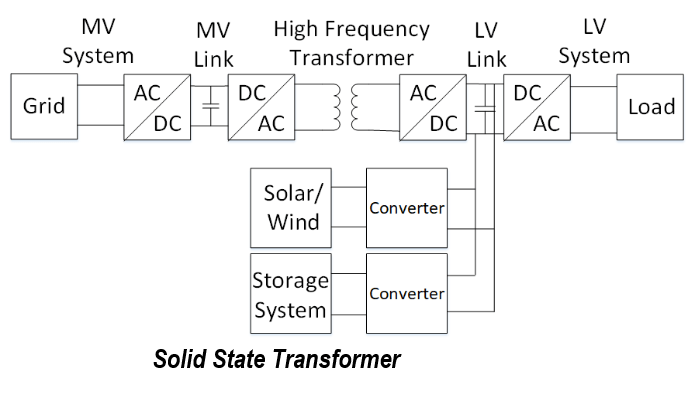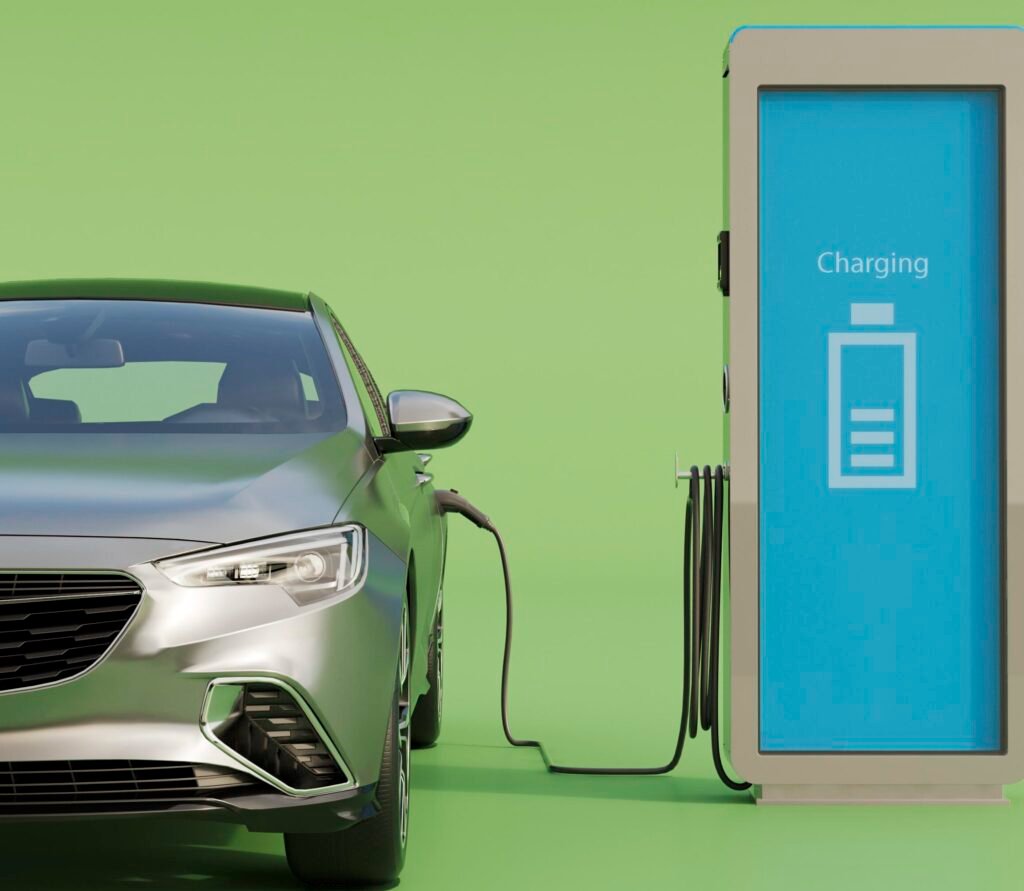Table of Contents
ToggleWhat is Solid State Transformer?
Solid state transformer has been put as one of the emerging technologies in power electronics. It is deemed to be the next distribution transformer in smart grids. Voltage transformation through the SST is achieved firstly by changing the frequency from 50 Hz to around 10 KHz after which the high frequency voltage signal is transformed to the value required then lastly, the signal is changed back to the system’s nominal frequency.
The high frequency voltage transformation leads to reduction in size of the transformer thus reduction in transformer energising currents. Also, the use of power electronics means more control is available to the utility.

Introduction
Solid State Transformer (SST) has been regarded as one of the most emerging technologies in the power distribution system. It has the advantages of low volume, low weight, fault isolation, and potential additional functions, such as voltage regulation, reactive power compensation, and etc. However, the involvement of large number of power devices makes the control of SST a challenge.
In addition, the high voltage and high power hardware design of the SST is not easy, certain design methodology needs to be developed. This paper considers the solid-state transformer concept as a viable alternative to the line frequency transformer in distribution circuits.
In the context of AC microgrids, the SST is as an alternative to passive transformer. SST basically comprises an AC-AC converter with three interfaces. The SST is a power electronic device that replaces the traditional 50/60 Hz power transformer by means of high frequency transformer isolated AC-AC conversion technique.
The basic operation of the SST is firstly to change the 50/60 Hz AC voltage to a high frequency one (normally in the range of several to tens of kilohertz), then this high frequency voltage is stepped up/down by a high frequency transformer with significantly decreased volume and weight, and finally shaped back into the desired 50/60 Hz voltage to feed the load. In this sense, the first advantage that the SST may offer is its reduced volume and weight compared with traditional transformers.
The SST is an emerging solution that can advantageously substitute the conventional transformer, thanks to its capabilities. Furthermore, it is a multi-functional equipment that offers:
conditioning of the power flow, whether of DC or AC form;
reduced size and weight thanks to the high frequency transformer;
good voltage regulating capabilities;
no diffusion of voltage swell or sag thanks to the DC link (if any);
power factor correction;
fast fault detection and protection;
capability to maintain the output feed for a time (hold up time) thanks to the DC link capacitors; Moreover, it offers the conventional transformer properties:
galvanic isolation between input and output;
step up/down of the input voltage;
Application of Solid State Transformer
The SST concept will improve power quality. Although the major improvement will benefit the costumers connected to the SST, the concept will also marginally improve the power quality of other users on the same network. Among the most important ancillary services provided there are the compensation of the reactive power and the filtering of the currents harmonics. In addition, the SST can provide, using suitable control functions, fault isolation and limitation capabilities.
In future power systems the usage of renewable energy resources will require an energy management of the power flow between sources and loads. The SST, thanks to its functionalities, may match the request. The low voltage DC link has the function of common bus to connect the distributed energy sources while the whole SST operates as an energy router with the function of coordinate the power flow among the energy sources, the grid and the loads.
SST can provide a significant reduction in train weight improving the traction efficiency and power density. Indeed the SST has been initially studied for the railway traction system.
The SST can deliver rated voltage for a wide range of input voltages, resulting in a good overall system load regulation. Using an SST to branch from the main feeder the SWER (Single Wire Earth Return) system would reflect a balanced three phase load to the utility, unlike the single phase load reflection in traditional systems.
The SST concept is ideally suited to extend the use of DC, both in MV and LV applications. The difficulty in interrupting a DC feeder under fault conditions is often cited as a major hurdle in the acceptance of DC distribution in MV applications. The use of the power electronic interface (SST) to generate the DC is a means of controlling the system and interrupting fault currents.
A SST can regulate the MV/LV ratio in accordance with the network operating conditions, facilitating the voltage control of the LV system independently from the MV voltage level. A sort of dynamic On Load Tap Changer (OLTC) is obtained. The voltage ratio, independently adjustable phase by phase, can be set in wide and continuous range of values in accordance with the voltage regulation issues or to obtain a partial regulation of the load consumption.
The SST may also provide VAr compensation depending on the topology adopted. The SST may also take the responsibility of harmonic current filtering, while the capability of it depends greatly on the bandwidth of its controller, which is in turn governed by the switching frequency of the SST.


